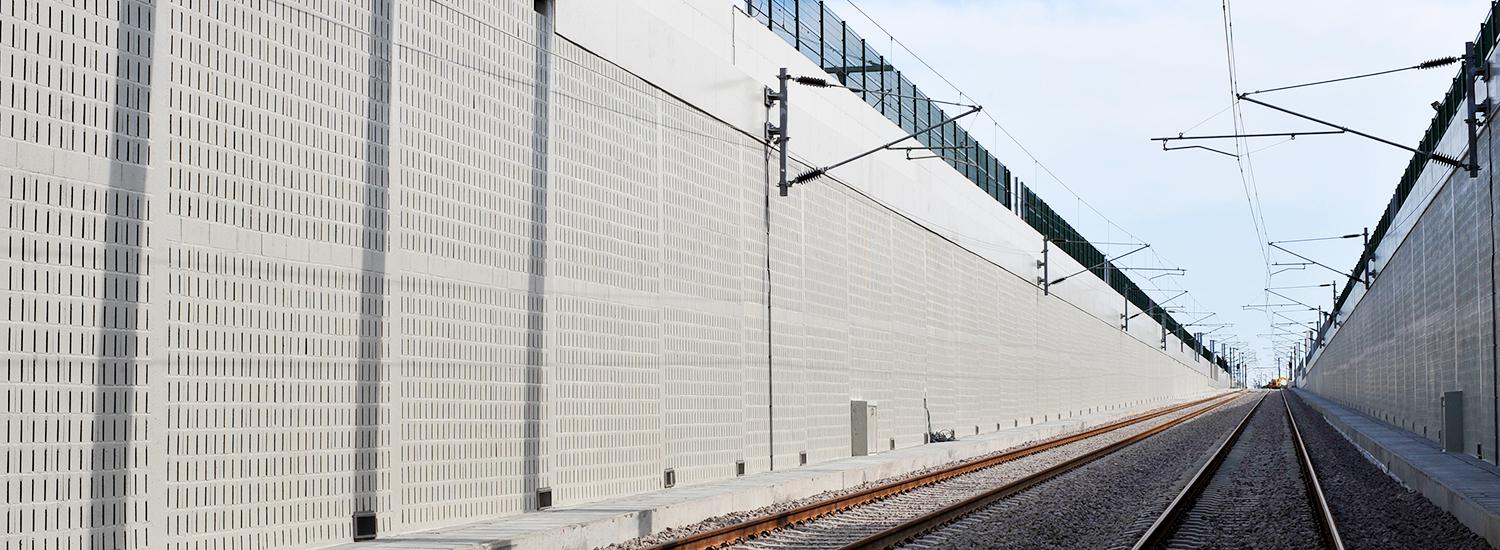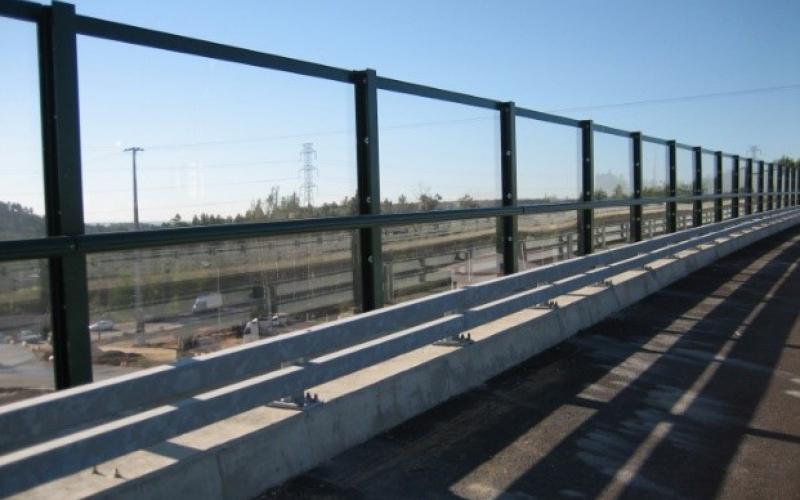Noise constitutes one of the major challenges for IP, as it is the transport sector’s responsibility to bear the impact and cost of minimizing this phenomenon.
IP has developed a series of actions relating to environmental noise which, while covering different fields, have a common objective: to reduce or, when possible, avoid environmental noise in the surroundings to transport infrastructure under our management.
Both nationally and on a European Union level, as the concessionaire of the largest part of the national road and rail network IP has undeniable responsibilities and commitments which derive from compliance with legislation on noise and which interconnect with territorial management instruments.
The management of high noise activities is a challenge which involves all stages of the infrastructure management life cycle so as to converge in compliance with legislation in force.
The implementation of measures to minimize and reduce noise is often the solution and mainly involves reduction at source (paving with noise reducing characteristics, and the modernization of railway lines and rolling stock) and, once these solutions have been exhausted, through measures to stop noise propagation, such as the installation of acoustic barriers.
Action by IP shows that investment has been made gradually with emphasis on the time when relevant investment will be made to modernize networks, especially when projects seek to increase transport capacity.
Practices followed at the company seek, both at the construction as well as the operating/maintenance stages, to reduce the inconvenience for local inhabitants caused by noise and eliminate, whenever possible, situations of acoustic conflict caused by traffic and infrastructure maintenance work, bearing in mind the constraints which are inherent to such activities.
From the very start, road and rail infrastructure projects are accompanied by Environmental Impact Studies, with a view to preventing noise, as well as preserving the existing acoustic environment.
When this is not possible, impacts on the sound environment are minimized by implementing road noise reduction measures including, the use of quieter paving. In rail infrastructure, short bars are replaced by long welded bars, full sections of track are replaced, and preventive grinding work is carried out. Sound barriers are also installed in both road and rail environments.
Furthermore, the construction of a new track often provides an opportunity to requalify the territory, improving the quality of life of local inhabitants and allows acceptance of the project to be promoted.
Noise control on road and rail networks with higher traffic flow has followed the methodology of drawing up Strategic Noise Maps (SNM) for all Major Transport Infrastructures Road e Rail under IP Management.

SNMs are used as a reference for Action Plans (AP), which propose the required measures to reduce environmental noise with a view to complying with maximum values set by legislation.
See further information on our Noise Action Plans:
The aim of this approach is to reduce the population exposed to high noise levels, and is in line with the European directive relating to the assessment and management of environmental noise.
It should not be forgotten however, that the current situation involves challenges on several levels, requiring joint efforts by different agents, including entities with specific responsibilities in spatial planning.


